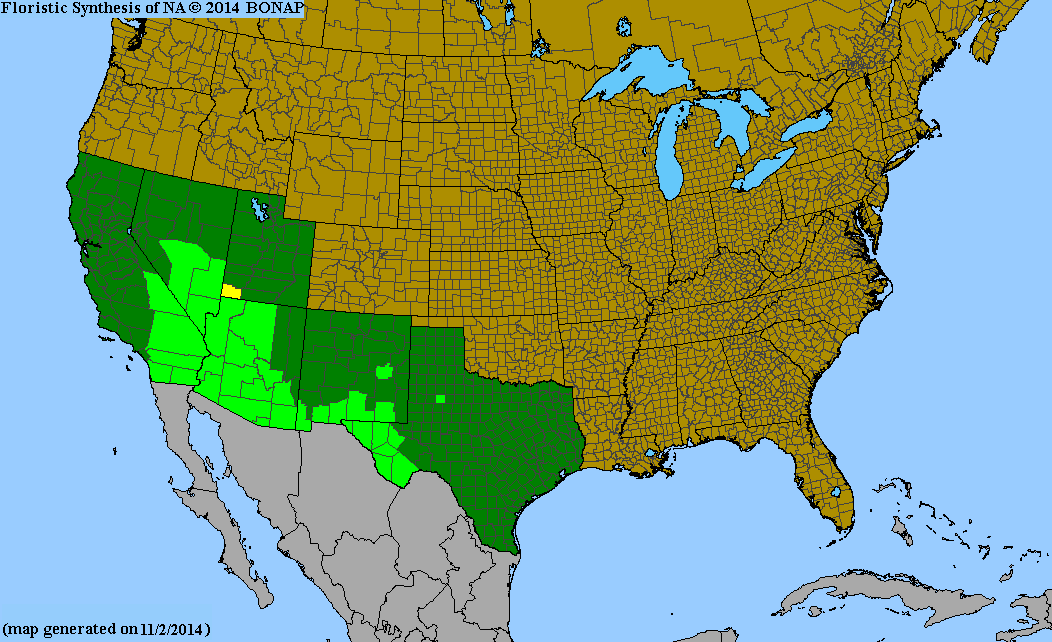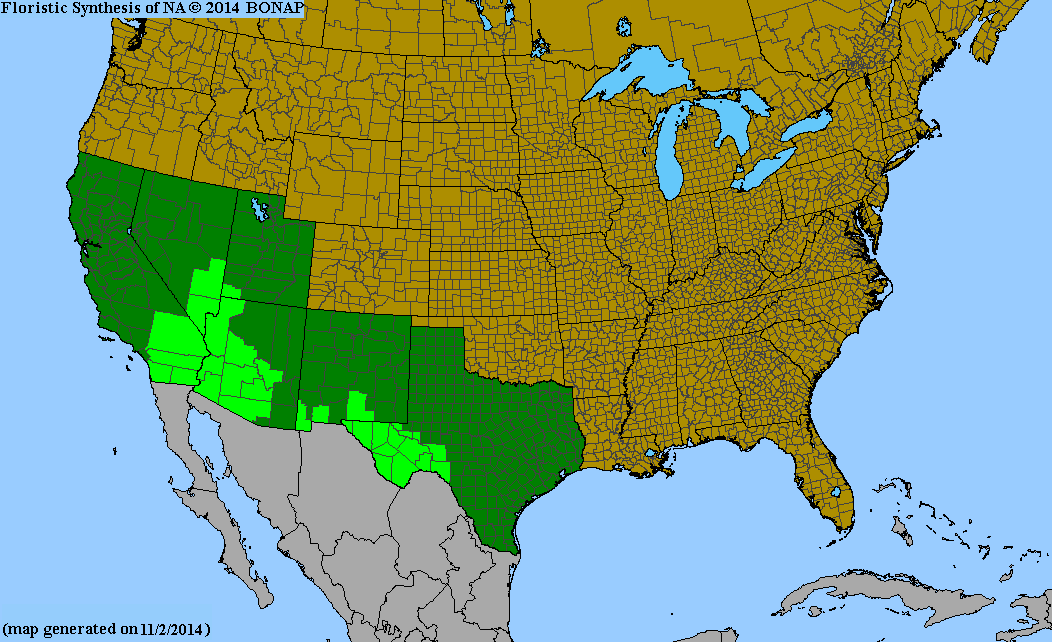Click on the images below to see larger versions.
| Scientific Name | Krameria erecta (Krameria glandulosa) | USDA PLANTS Symbol | KRER |
| Common Name | Littleleaf Ratany | ITIS Taxonomic Serial No. | 503288 |
| Family | Krameriaceae (Krameria) | SEINet Reference |
Click Here |
| Description |
Habitat: Desert environments, open hillsides, rocky flats below 3600 ft. (middle elevations in Big Bend). Plant: Low, woody, much-branched shrub up to 2 feet tall, branches densely covered in fuzzy, white hair. Partial root parasites of nearby plants. Leaves: Small leaves less than 1/2-inch long, linear to linear-lanceolate, alternate, grayish green, and covered in white hair. Inflorescence: Single flowers borne at leaf nodes, each 1/2-inch across with 5 small petals and 5 conspicuous petal-like, point-tipped, magenta sepals curled inward or straight; petals are divided into 3 flag petals (yellow-green with reddish tips) and two others around the ovary. Bloom Period: April to September. Fruit: Nutlike, ball-shaped and covered in fuzzy, usually pinkish hair and red-brown spines with barbs along the length. References: www.fireflyforest.com, SEINet, and www.americansouthwest.net. |
BONAP Distribution Map |
Texas Status: Native |
| Scientific Name | Krameria grayi (Krameria bicolor) | USDA PLANTS Symbol | KRGR |
| Common Name | White Ratany | ITIS Taxonomic Serial No. | 897365 |
| Family | Krameriaceae (Krameria) | SEINet Reference |
Click Here |
| Description |
Habitat: Desert environments, lower elevations (below 3600 ft.) in Big Bend. Plant: Low shrub up to 2 feet tall, numerous slender stems well-branched, densely covered in fuzzy, white hair. Partial root parasites of nearby plants. Leaves: Small, sparse, leaves are linear to oblong, alternate, grayish green, and covered in white hair. Inflorescence: Single flowers borne at leaf nodes, each 1/2-inch across with 5 small petals and 5 conspicuous reflexed (bent back), petal-like, point-tipped, magenta sepals; petals are divided into 3 flag petals (yellow-green with reddish tips) and two others around the ovary. Bloom Period: April to September. Fruit: Nutlike, ball-shaped and covered in fuzzy, usually pinkish hair and red-brown spines with barbed tips. References: www.fireflyforest.com, SEINet, and www.americansouthwest.net |
BONAP Distribution Map |
Texas Status: Native |









